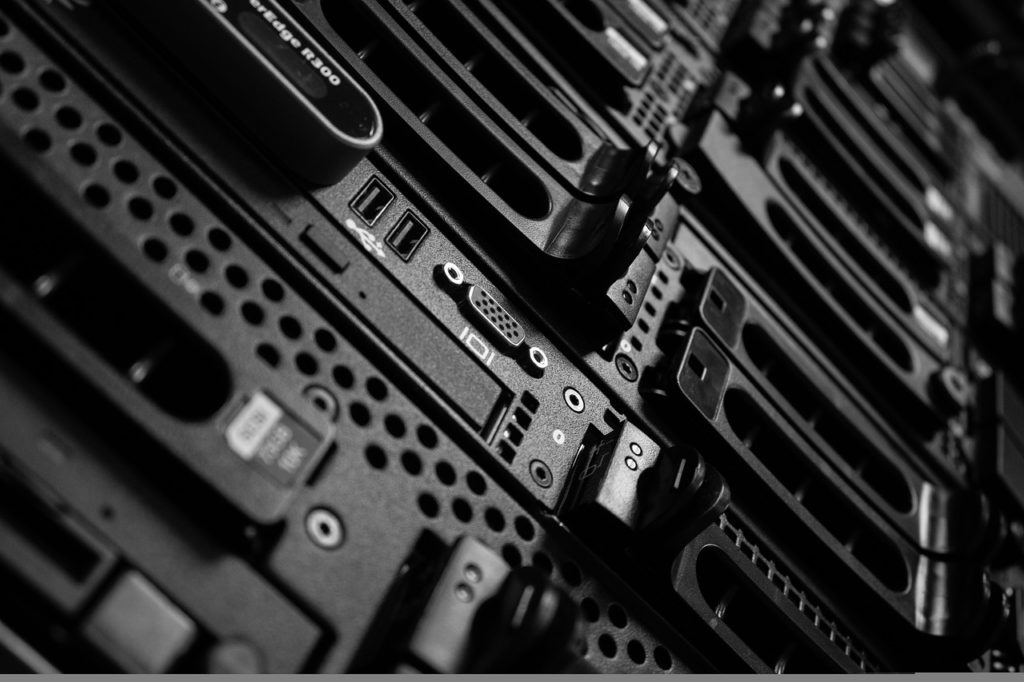A data center is a building or group of buildings that contains networked computers that store and process data. Operations with extensive technology—like telecommunications companies, for example—require extensive hardware that must be housed where it is all connected and protected. This facility is a data center.
Components of a Data Center
Data centers aren’t simply warehouses packed wall-to-wall with computers. Their design is a bit more complex. Data centers typically contain:
-
Hardware
Data centers hold not only computers that store information, but also the other important information technology (IT) equipment that keeps the computers connected and operating properly. This includes servers and a myriad of wires, cables, networking switches, and routers.

-
Power
All of this equipment requires a reliable power source in order to operate—and large data centers can consume dozens of megawatts of energy or more. A data center typically also maintains backup generators in case of power failure. Keeping the equipment up and running 24/7 is a high priority.
-
Ventilation and Cooling
Another extremely important component of a functional data center is the cooling and ventilation system. When many machines are collected in a room and working nonstop, there is a very real threat of overheating. Components on these (often expensive) machines can actually melt if there isn’t sufficient air flow and temperature control. Therefore, it is important for data centers to have powerful cooling systems and finely tuned, automatic fire protection systems.
-
Security
Because the technology housed within a data center is complex and expensive, security is another important component of these facilities. Operators must consider security not only from the threat of theft or sabotage, but also from threats like natural disasters.
Data centers are often fortress-like, made of cement and steel with few windows. Some facilities even line the inside of their walls with Kevlar (the material used in bullet-proof vests) for added security from explosions. Many data centers include redundant utility lines to provide power, water, and fiber-optic connectivity even if the first lines fail.
When selecting a site for a data center, companies must consider factors like proximity to main roads and other key infrastructure like airports and power plants, as well as the area’s risk of earthquakes, tornadoes, and hurricanes.
Entrances to a data center are often minimal. These entrances and the facility’s perimeter are usually monitored by security guards. Surveillance cameras and multiple layers of authentication for employees can also provide an added layer of security.
Different Types of Data Centers
Not all data centers are the same. Small businesses can sometimes afford to simply house their servers in a small room, which becomes their personal data center. Other companies require far more space and connectivity, so their data center may be larger, or they may have several data centers.
The largest data center in the world opened earlier this year in Reno, Nevada. Dubbed “the Citadel,” this sprawling campus includes 7.2 million square feet of space and consumes 650 MW of power.
The American National Standards Institute has a system for grading data centers based on dependability and safety. This system assigns data centers to various “tiers,” with the first tier being a small server room with little security, and the fourth tier being a large and highly secure data center.
History of Data Centers
The original manifestation of the data center was in the 1960s, when computers were almost exclusively used by the government and the machines were so large that just one took up an entire room.
Over time, computers became smaller, as the industry abandoned the use of vacuum tubes for transistors and other smaller, more efficient solid-state devices. The 1980s saw the birth of the personal computer in more or less the form we recognize today. By the 1990s, companies were networking PCs to perform increasingly complex calculations and tasks, and the client-server model of computing emerged in full force.
Also in the 90s, it became important for companies to have an online presence, which meant easy and constant access to the Internet. The first formal data center opened in 1999.
How Data Centers Are Changing
Data centers are obviously energy-hungry operations. As a result of the 24-hour-a-day operations of these facilities, some reports have shown that the majority of the energy pulled from them actually goes to waste.
In 2012, the New York Times reported that data centers worldwide consumed about 30 billion watts of electricity. As much as a third of that wattage was consumed by data centers in the US. The report also found that less than 15 percent of this power was used to actually compute. Mostly, the servers within the data centers were running idle to prevent a crash in the case of an activity surge.

Data centers have had a negative environmental impact in other ways, too. Generators can release diesel exhaust into the environment, a fact that has placed many data centers on a list of the top stationary diesel polluters in California. Since the 2012 Times report, however, the industry has placed an increasingly stronger emphasis on efficiency.
According to a US Department of Energy study, US data center energy use grew by 24% from 2005 to 2010. However, from 2010 to 2014, their energy consumption increased by only 4%. Efficiency measures have played a big role in helping the data center industry control its energy use, even as more data is being created and stored.
In addition, some of the titans of the tech industry have committed to using renewables to power their data centers. For example, Google now purchases enough clean energy to power all of its global operations, including data centers and offices.

